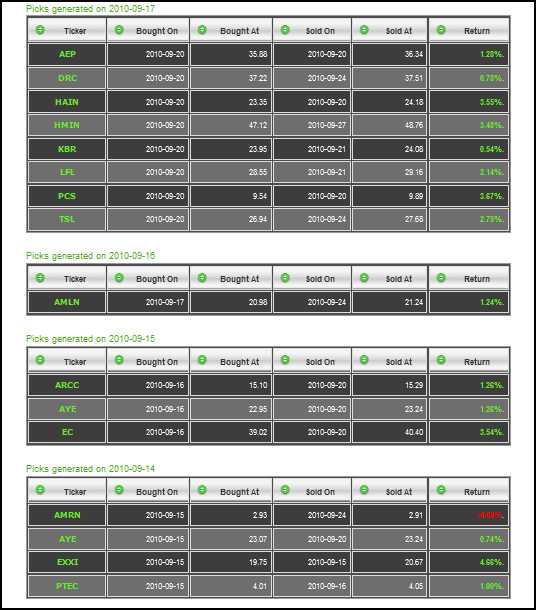The first post demonstrated that throughout 2010 there has been a significant edge to being long overnight.
I mentioned that figuring out what is going on can be a tad complex. Maybe the overnight market is mean-reverting? Perhaps it is following through on the daytime market? Perhaps it is neither or both?
The following graph shows the results of adding a variable before getting long for the overnight. For example, if the close was greater than the open (C > O), then SPY was bought at the close to hold overnight. For each variable, a provision was made to buy for the overnight even if the two conditions were equal (C=O). In hindsight, I wish I wouldn’t have run the tests with that provision, but it did not make that much difference.

Summary of the Results:
Over all SPY history, profitable overnight trades are primarily due to the market mean-reverting during the overnight. Even the O < (C,-1) variable, which tests if the overnight market mean-reverts relative to the previous overnight market, show mean-reversion.
However, in 2010, we do see some evidence of overnight profits being the result of market follow through. I have mentioned, as have others, that mean-reversion has been taking a bit of a break lately, and these results reflect that. I do expect that mean-reversion will in the near future again be responsible for the bulk of the overnight returns.
What Does This Mean for PDS?
Well, it now makes perfect sense to me why PDS performs better when selling at the close rather than the open. As PDS sells positions into strength, the market is typically trading higher than the open, and higher than the previous close when the majority of exit signals are given. Given the above research, we would expect the market to mean-revert overnight, which means the likelihood of a lower open, and therefore the likelihood of a lower exit price, relative to the previous close.
Chart Porn:
Here is the equity curve and profit table generated from trading the overnight market after the conditions of the best performing variable are met, C < (C,-1)


Imagine using margin to buy the SPY at every close, and selling it at every open, when the conditions are optimum for the setup. With .005/share for commissions, one would still have been able to add approximately 4% a year to his total return. Not bad!
Comments »









